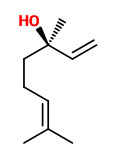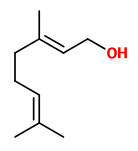Dies ist eine alte Version des Dokuments!
Aniba rosaeodora Ducke - syn. Aniba duckei Kosterm. - Lauraceae - pau rosa (port.), Brazilian rosewood, Brasilianisches Rosenholz, Rosenholzbaum
Critically endangered evergreen tree, up to 30m high, native to the rainforests of South America.
„The plant is one of the commercially important sources of rosewood oil. The tree is collected in the wild… Each tree yields about 1% oil by weight of wood… A. rosodora is an endangered species. Populations have declined rapidly due to the destructive harvesting methods. Areas previously logged have not seen much regrowth. It might even be critically endangered.“
http://en.wikipedia.org/wiki/Aniba_rosaeodora
„The oil („bois de rose“) possesses a characteristic aroma and is a long-established ingredient in the more expensive perfumes. Although formerly it was used more widely as a fragrance, particularly in soaps, where the strong top-note could be used to advantage, its relatively high price now makes it uncompetitive with the cheaper, larger volume oils… Use in aromatherapy formulations, a relatively recent application, has become less attractive as environmental concerns have grown over the destructive nature of rosewood oil production in Brazil.“
[Flavours and fragrances of plant origin (Food and Agricultural Organization). Chapter 4, „Rosewood Oil“. 1995]
http://www.fao.org/docrep/v5350e/V5350e06.htm
The main component of the essential oil of A. rosaeodora is linalool (81.2%), other compounds present are α-terpineol (4.7%), cis-linalool oxide (2.0%), trans-linalool oxide (2.1%), geraniol (1.2%), and limonene (0.9%).
[The chemical composition of some Lauraceae essential oils and their antifungal activities. Simić, A., Soković, M. D., Ristić, M., Grujić‐Jovanović, S., Vukojević, J., Marin, P. D., Phytotherapy Research, Vol.18(9), 2004, 713-717]
Bois de rose oils from French Guiana (Cayenne type) own a higher content of (-)-(R)-linalool than Brazilian oils, this may have been the reason why Cayenne type oils were considered as superior. An analysis of the wood scent (SPME-GC/MS) showed the main constituents to be linalool (49.1%), α-terpineol (21.3%), limonene (6.8%), and terpinolene (6.1%).
[Scent of a vanishing flora, Roman Kaiser, 2011, 338-339]



